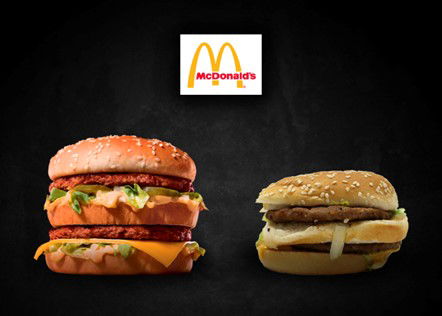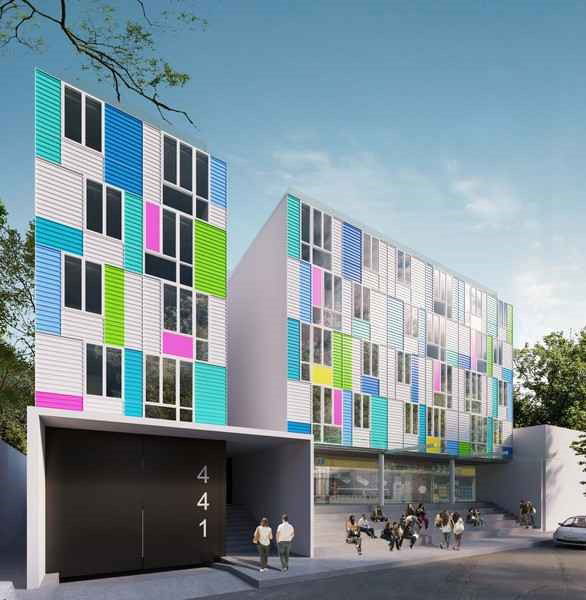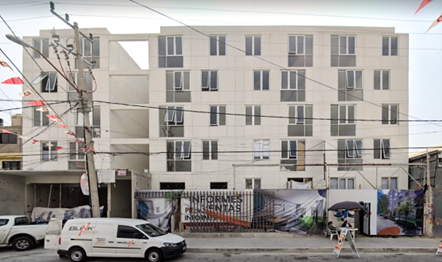ISSUE 8 Of Images, Advertising, and Architecture by Guillermo González Andrade
Images have been part of our daily lives practically from the moment in which the human being began to develop skills to express or communicate their ideas, feelings, thoughts, and knowledge from graphic and visual media, it could even be said that this form of communication was developed long before written communication.
Over time, images have been used in various ways and have had functions that go beyond the simple fact of acting as a representation. For example, during the period of the Conquest in America, the winning side not only materialized its victory in the domain of the territory but also began a cultural conquest and indoctrination from the insertion of images that represented the new regime.
Today, under the global economic system we are also facing a new visual conquest in which images play a fundamental role in the functioning of this system, that is, advertising or rather the advertising image. Nowadays there is practically no product or service that does not require visual means to survive the complex dynamics of the market. These images permeate our reality in various ways and through different means, from appearing on our mobile devices, in magazines, on public transport, or on the streets, in order to reach the largest population to create or stimulate our needs to operate as cultural referents or become symbols of identity or goodness, aspirations based on consumer trends. In this way, advertising images rather than being a representation of any product or service function as a persuasive tool capable of altering the perception of reality in order to encourage consumer trends, which are driven by the currents that dominate the market and therefore, as a consequence, they influence the ways in which social life develops.
In that sense, architecture is not exempt from this relationship. Images have been present in the discipline since its inception, even before its professionalization during the European Renaissance where they appeared in the form of paintings or illustrations, performing their work as tools for representing any architectural space. However, with the arrival of the industrial era, and later from Modernity until our time have been acquiring other uses and new valuations within the practice of architecture and its relationship with other professional fields. Since then they began to be used as a means of disseminating and promoting the architectural avant-garde derived from technological advances, and new forms of production that incidentally act as a pillar for the distribution of capitalism as an ideology that with the passage of time would become the economic dominant system.
For example, the Universal Exhibition in Paris in 1889 would have as its banner what could be considered one of the most iconic buildings in the modern history of humanity, the Eiffel Tower, which would be shown as the maximum manifestation of the advances in construction techniques and technological development of that time. This work approximately 300 meters high was placed as a symbol of modernity and would maintain hegemony as the highest construction developed by the human being until shortly after the first quarter of the twentieth century. However, the message of the arrival and consolidation of the modern era was not only reduced to the materialization of the Eiffel Tower but at the same time advertising images were used as the main protagonists, seeking to graphically expose technological progress and the mastery of new processes, and act as devices for transmitting the new directions of thought in order to have a greater scope of diffusion that went beyond what could be seen inside the Universal Exhibition.

IMAGE 1. Poster of the 1889 Universal Fair in Paris.. Collection Tour Eiffel. https://www.toureiffel.paris/es/noticias/130-anos/la-torre-broche-de-oro-de-la-exposicion-universal-de-1889
Another example is one of the images developed to promote the construction of the Empire State Building (which also became an iconic building of modernity and especially the power of capital), which was responsible for displacing the Eiffel Tower as the tallest building in the world. The reference image consisted of a manipulated photograph that showed the anchorage of an airship in the highest part of the tower that is formed by a metal spire approximately 60 meters high. This overlapping metal structure on top of the building was intended to house a connection point for airships. Incidentally, it overcame its closest opponent, the Chrysler Building, in the competition to become the tallest project in New York City and worldwide.
This manipulated photograph was disseminated in print media as an advertising strategy that achieves a double purpose, on the one hand, to show the integration of this place into the architectural program of the tower as the great constructive and technological innovation of the time (although later without success given the technical complexity involved in keeping anchored the airships to the structure). and on the other hand, to hit the reputation of the Chrysler Building that also integrated a metal structure at its top but that would only fulfill merely decorative and aesthetic functions in its architecture. In this way the image beyond being a representation of the ambitious aspirations of the project would act as a persuasive instrument orchestrated by the investors of the tower (and consequently by the economic power that was constantly transforming the urban landscape of New York). ) to make it more attractive and impressive to pretend to be accepted by public opinion as the most important building in the city, as well as of its time.

IMAGE 2 Zeppelinanchored to the Empire State Building. Keith from Lellis Gallery. The empire state building: a celebration in photographs 90th anniversary of the world’s most famous building June 23 – August 13, 2021.. https://www.keithdelellisgallery.com/exhibitions/the-empire-state-building-a-celebration-in-photographs/exhibited-works
Now, at this point, it is necessary to mention that these two examples of advertising, despite having caused media impact in their dissemination, correspond to a time when the mass media still had a "short" reach compared to the capacity they have today. However, during the last decades, advertising has been increasing its presence exponentially in the production of architecture (it is worth mentioning that there are buildings that also fulfill the function of being an advertising message as analyzed by Robert Venturi in Las Vegas) due largely to the demands and determinations of the economic system; the need of the discipline to make a place for itself in it; as well as the effect of the emergence of new mass media; and the development of technologies applied to architectural representation and therefore to the production of images.
This has resulted in an invasion of advertising images in various media, from digital to street advertising, being used both to offer architectural spaces built and those about to materialize. These images on the one hand have the objective of offering architectures in the form of merchandise, mainly those that are developed under the domination of the real estate market (although other types of works such as equipment or infrastructure projects can also be promoted to name a few) And on the other hand they have worked as a means for architects to make themselves known, especially through social networks.
However, this has led to images for advertising purposes having a utility that goes beyond acting as simple architectural representations to become persuasive means that seek to capture as much of the public as possible as mentioned in the previous examples. Likewise, it is possible that in order to achieve this purpose, the production of these images must resort to the integration of visual resources (or manipulations) that allow them to be more attractive to the eye, which could be quite similar to the advertising techniques used by fast food restaurants to encourage the consumption of their products, And in the same way as it happens with this type of advertising, we could also find "architectural products" that are distant from what was once exposed in an advertising message.

IMAGE 3. Comparison between advertising and the actual product of a fast food restaurant. https://businesstech.co.za/news/lifestyle/97671/burgers-in-south-africa-real-life-vs-advertisements/?__hstc=94867587.07430159d50a3c91e72c280a7921bf0d.1526860800051.1526860800052.1526860800053.1&__hssc=94867587.1.1526860800054&__hsfp=1773666937
In the real estate market, it is common for construction companies or developers to resort to implementing advertising strategies, usually in streets and social networks, composed of images that seek to enhance the attributes and characteristics of their projects in order to start attracting potential buyers even if they are not yet built. This happens mainly with a type of images that have become one of the essential means of representation for the discipline, the so-called "renders". This powerful tool has even come to relieve more traditional forms of representation such as architectural plans or freehand drawings used to communicate project ideas. The renders, technically are digital perspectives through which it is possible to visualize realistically (although it can also be abstractly) the spatial and material characteristics of any architectural project, allowing anyone (in this case a possible consumer) to better understand the formal and spatial conditions of an architectural object.
Thus, their ability to represent reality also opens the possibility of intentionally or unintentionally integrating visual resources aimed at emphasizing or aesthetically exalting the conditions of the architectural project in question to make it more attractive or fascinating in the eyes of a potential consumer. These resources can create quasi-cinematic scenes in which you can manipulate the color of the environment, the type of climate, and its vegetation, to add incandescent reflections, and incorporate captivating skies or landscapes, hint at some lifestyle through the materials, furniture, or objects that decorate the space, or through the Human scales that seem to give space a use, just to mention a few.
Therefore, these added elements influence perception, managing to create highly persuasive images based on exalting merely aesthetic aspects of the project (and the image itself), simulating a reality capable of seducing the observer in order to motivate or incite its consumption regardless of whether the final product may differ from what is exposed. In the image, just as it happens with the advertising of the aforementioned fast food restaurants. This is important to submit to a critical observation especially when these advertising images are used to offer properties that are still under construction and the only visual reference of the project that the potential buyer has (in addition to the so-called apartments shows that they are only a fragment of the entire work) are the renderings.

IMAGE 4. Rendering used as advertising for a residential building east of Mexico City. . https://centrourbano.com/vivienda/presenta-quiero-casa-enrique-norten-proyecto-calle-4/

IMAGE 5. The apartment building east of Mexico City closing the construction stage. https://www.google.com.mx/maps
In addition, this is not only reduced to the elements added in the image, but it can also be given that the materials, the forms, and even the architectural program are replaced in the final product. In this way, it would also be necessary to subject the images to an ethical judgment considering that the acquisition of a property, unlike any fast food product, involves an effort and a considerable economic expense for those who are looking for a space to live. In addition, this advertising can also be useful to encourage real estate speculation as well as a trigger for gentrification processes since future interventions in urban spaces can be made visible through this one.
To conclude, the lines exposed above are only an outline of the role that images play in the practice of architecture, where it is necessary to address them not only as a means of representation but as a process that significantly influences the ways in which the discipline develops; develop the knowledge to read and interpret images beyond their surface, understand its valuations and scope. Likewise, it is also a phenomenon that not only concerns the production of architecture, but is also part of the complex network in which the world works, and in which images, including those used for advertising campaigns, operate at different levels within our reality.
About the author:

Guillermo has a master’s in architecture from the School of Architecture of the National Autonomous University of Mexico. Since 2015 he has been a professor of the Administration and Promotion of Urban Work of the Autonomous University of the State of Mexico in the Chimalhuacán Professional Unit and since 2023 as a professor in the Landscape Architecture School of Architecture of the National Autonomous University of Mexico.
In practice he has developed in different branches related to the field of design, developing projects of architecture, urbanism, and landscape architecture. Likewise, he has linked this practice with architectural visualization, graphic representation, and research. He has been interested in visual communication, urban image, and urban-architectural criticism seeking to link practice with teaching.